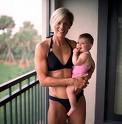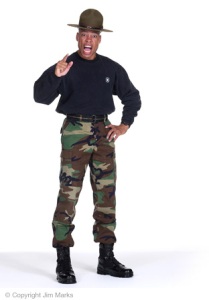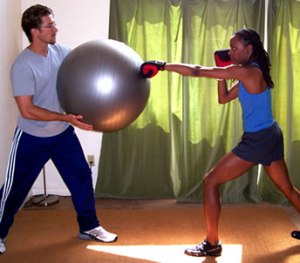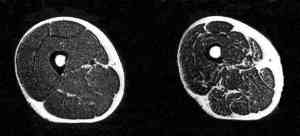Dara Torres has mastered the art of training her own body. But it didnt happen overnight.
Everyone seems amazed by Dara Torres and her olympic journey.
And rightfully so. She is an amazing woman with an amazing story to tell.
But before you wonder if there is truth in all the ‘performance enhancing’ headlines, take a moment to ponder this:
what if her training and recovery routine is just that much better than the current system all the other athletes are using?
When I was in Australia I had the opportunity to work at the Australian Institute of Sport (a developmental center for Olympic and developmental athletes). Something I was constantly amazed at was the hours of training the AIS swimmers put in every morning. They would swim for hours and hours, perfecting their technique so they could carve through the water all the more effortlessly.
What I didn’t realize at the time (and what many coaches at high level competition also fail to realize) was the amount of overtraining that was happening. In fact, many swimmers are chronically overtrained.
Dara used to train like that. But not anymore.
Dara is now training 5 times a week in the pool – breaking world records and swimming half as much as her Olympic teammates.
How does she do it?
Swimming records depend on flawless technique in the pool. Once that technique has been learned, is it necessary to put in the same hours? Dara might be living proof that once perfected, training need not be so rigorous and focus can shift to other areas of performance.
Live in Denver? Go to WWW.FITNESSBYATLAS.COM to get a free pass to one of our classes
Dara is also an example of an athlete who has taken the initiative and chosen her own training routines. If she keeps bringing home the gold, who is to blame her for finding her own path to excellence?
Thankful to her moms and pops
The Dara Torres genetics, limb lengths and mental toughness all play a role in her natural affinity to gold medals – but lets also note the perfect swimming form her coaches constantly praise her for.
Dara Torres is one tough bitch
Wanna know how tough she is?
Dara Torres gave birth… but made sure she found time to lift weights and swim laps the very same day
Mental and physical gifts aside, perhaps the real reason Dara is getting her great numbers at such an age is the great support network she has built around herself.
Let’s take a closer look:
Dara Torres support team
- Chris Jackson: Sprint coach
- Andy O’Brien: Strength and Conditioning coach
- Steve Sierra and Anne Tierney: Two full-time personal stretchers (these people work together to stretch Dara in ways a single person cannot. Might this be a key secret?)
- Electro-physiotherapy – not sure of the science on this one, but a lot of the research points towards muscle rehabilitation rather than performance-based outcomes
- Nanny to help look after her young ones
- Nutritionist and meal plan program
- doctor (her boyfriend) to ensure she stays in perfect health
Thankfully Because of the status she is, she receives assistance from sponsors to help pay for this team of (non-olympic funded) experts.
(Spare a thought for the other non-sponsored athletes who must work at Home Depot and live off of the ‘all-you-can-eat-pizza-bar’ to keep their training up with the hope for an olympic dream.)
Do you dare to keep up to date with other articles I post? Subscribe to this blog by clicking here!
However, sponsorship/lack of sponsorship aside:
Daras workout may be a key:
Daras workout believes that machines are built to help people get better at using machines, not swimming.
She often works out without sitting down in a single machine.
Her constantly changing regimen encompasses Swiss balls, medicine balls, bands and resistance cables in innovative and functional methods.
The compound workout she is driven through is designed to teach her muscles to be stronger together – not stronger apart. The finely tuned neuromuscular network she constantly builds upon means her body works together in all the right places.
Daras recovery may be even more important:
Dara receives daily attention from a couple of experts that stretch and massage her in innovative and brutally painful ways. The result? A body that regenerates quickly and moves smoothly come next workout.
Her workouts make sure the same muscles get worked out differently each time. Her massage/stretch team make sure her muscles get the maximal recovery. Her reduced swim load means she gets to practice her technique but not reach a point where she is overtraining. Which is where the majority of professional athletes are right now.
If you are a high level athlete, chances are you are overtrained right now
If you want to be doing whatever it is you do at an older age, here are some tips for you:
Secrets to help make you a ‘Dara Torres’ at whatever you want to be best at:
- Get a massage on a regular basis. If you build up the waste in your muscles, you have to be able to remove the waste from your muscles. Simple equation, huh.
- Stop eating food that you know is not good for you. You are what you eat. That means your joints are made of that crappy fast food you choked down last week. Crappy fast-food joints don’t last that long (in case you didn’t know).
- Try things outside of your regular team protocol. If you want different results than everyone else, do things differently. Try relaxation. Try yoga. Try acupuncture. Try sleeping at a decent hour every night. If you look at the habits of the greats in any sport, they do the things that others don’t.
- Be a stickler for form. Good form means relaxed muscles, smooth joints and reduced injuries. It also means better performances now and tomorrow. Daras coaches know she has her form down pat. She ought to, given the years of practice she has had. But she didn’t get it without focus and conscientious effort.
- Make your next gym visit a functional training session. Your body will realize connections it never realized it had before. You will feel muscles that were previously dormant. You will curse me for giving you the idea for this workout but thank me later when your performance improves dramatically.
- Stretch. Focus on loosening the tight muscles first – think about what tighten as you sit. Your chest, lats and hip flexors are a great place to start.
If you haven’t been doing any of this, then start tomorrow. It is never too late for good health.
Last word of wisdom for everyone out there, athlete and non-athlete:
If you are working hard, you should be recovering even harder.
Triathlete or Track & Field athlete, money-maker or mother of four – if you are putting in the effort, make sure you give yourself the opportunity to recover.
This will give you the best chance to keep you on your game and keep doing the things you love with less burnout, doing it better, and doing it at a high level for many years to come.
Live in Denver? Go to WWW.FITNESSBYATLAS.COM to get a free pass to one of our classes
Jamie Atlas
https://jamieatlas.wordpress.com
Quines mas macho? Dara Torres es Michael Phelps? Click here to read a post comparing the two
Top three all time blog posts:
the key component missed by 90% of flexibility classes
which is best: treadmill, bike or elliptical?
Do you dare to keep up to date with other articles I post? Subscribe to this blog by clicking here!















